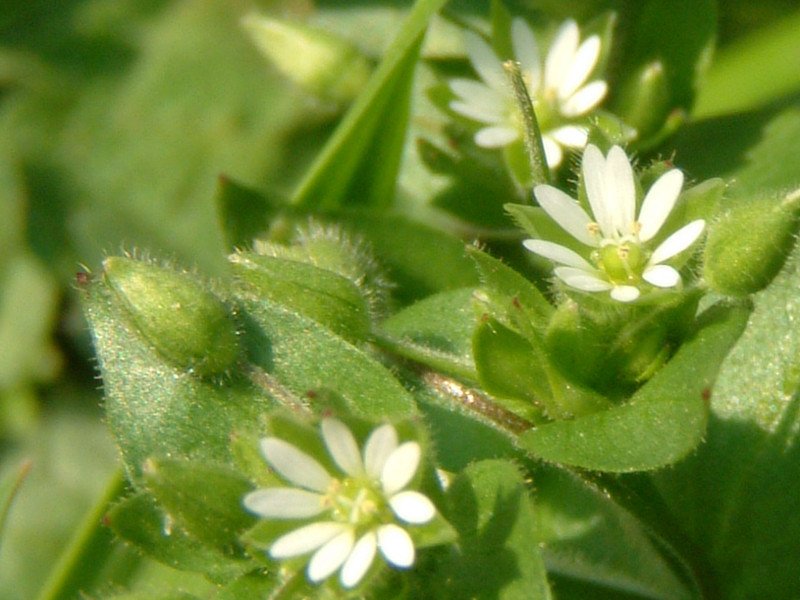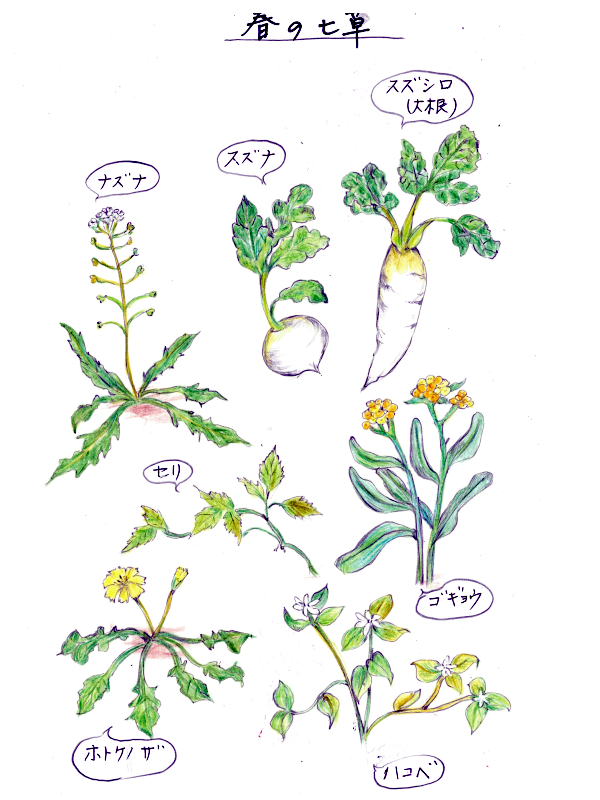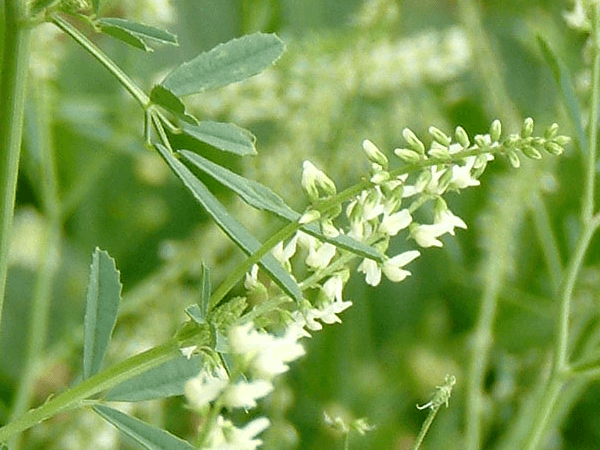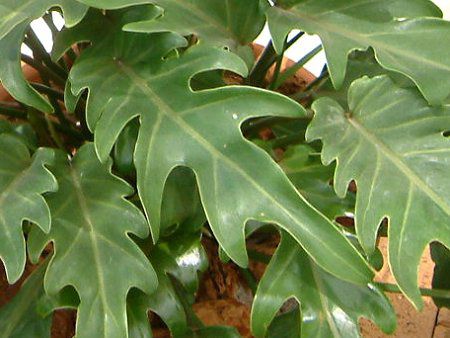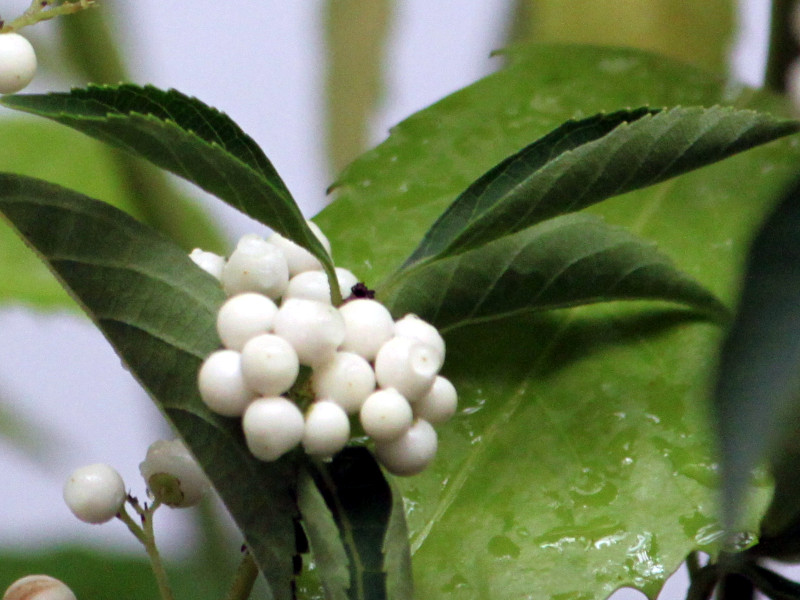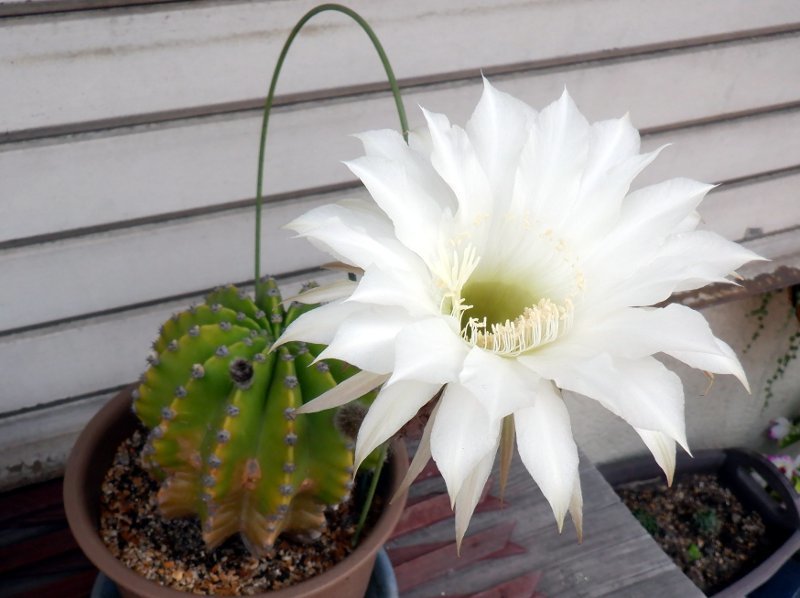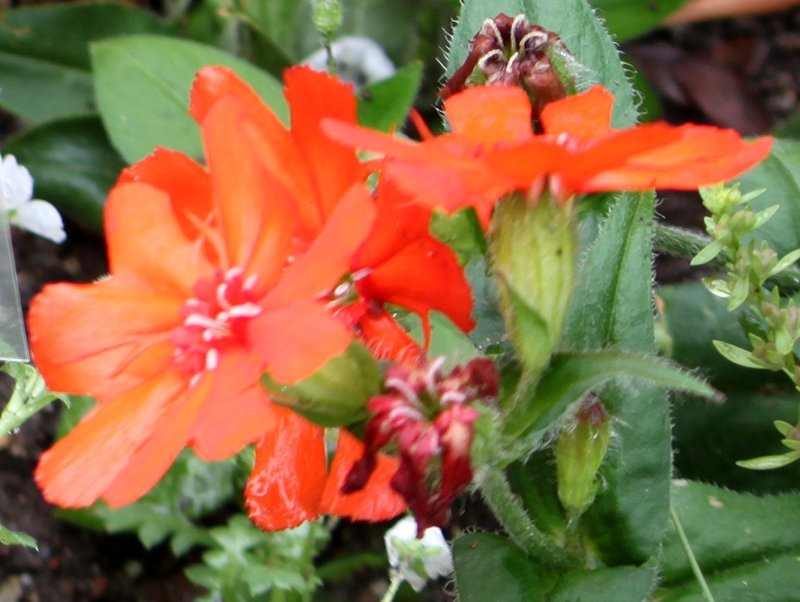Stellaria media
- Flower nameStellaria media
- Scientific nameStellaria media
- Alias繁縷, コハコベ
- Place of originAll over the world
- Place of floweringFields and footpaths
- Flowering seasonJanuary, February, March, April, May, June, July, August, September, October, November, December
What is Stellaria media
Edible, Bird Feed, and Medicinal Herb "繁縷" (Hanrou) in the Seven Spring Herbs
Stellaria media, chickweed , starwort, or stitchwort (繁縷, Scientific Name: Stellaria media) is an annual herbaceous plant belonging to the Caryophyllaceae family, native to Eurasia. It naturalized in prehistoric times and is now found worldwide.
It is also known as Common Chickweed, Starwort, Stitchwort, or Chickweed in English. In Japan, the common species is Kohakobe (S. media), which grows in fields, along pathways, roadsides, and wastelands from Hokkaido to Okinawa.
In Japan, the commonly seen species is Kohakobe (S. media), which grows naturally in fields, along paths, and in wastelands from Hokkaido to Okinawa. It grows to a height of 10-20 cm. The leaves are 1-2 cm long, oval-shaped, entire-edged, and alternate.
Chickweed is one of the seven spring herbs (春の七草, Haru no Nanakusa) and blooms year-round, with its peak flowering period from March to June. Its inflorescence is a cymose cluster, producing small white flowers about the size of a grain of rice. Each flower has five deeply split petals, giving it the appearance of having ten petals. It has 1 to 7 stamens, three styles, and five sepals.
Between May and October, the plant produces ovoid capsules containing small circular seeds (about 0.2 cm in length).
The Seven Spring Herbs
The Seven Spring Herbs (春の七草), which were traditionally consumed in the Manyo period (7th–8th century), include:
Seri (Japanese parsley, Oenanthe javanica)
Nazuna (Shepherd’s purse, Capsella bursa-pastoris)
Gogyou (Cudweed, Gnaphalium affine)
Hakobera (Chickweed, Stellaria media)
Hotokenoza (Henbit, Lamium amplexicaule)
Suzuna (Turnip, Brassica rapa var. rapa)
Suzushiro (Radish, Raphanus sativus)
Origin of the Name "Hakobe"
The Japanese name "Hakobe" originated from the ancient word "Habikorimemura", which later changed to "Hakobera" and then shortened to "Hakobe".
The Chinese characters "繁縷" (Hanrou) were borrowed from Chinese, referring to the noticeable streaks on its stems.
The genus name Stellaria comes from the Latin word "stella" (meaning "star"), due to its five-petaled flowers.
The species name media means "middle" in Latin, referring to the size of the flower being intermediate between Midori-hakobe and other chickweed species.
Types of Chickweed
There are about 120 species worldwide, and in Japan, the most common ones are:
Kohakobe (S. media)
Midori-hakobe (S. neglecta)
Ushi-hakobe (S. aquatica), which has glandular hairs on the upper parts
Flower Language
"Rendezvous"
General Information
Common name: Chickweed (繁縷)
Scientific name: Stellaria media
Other names: Ushi-hakobe, Kohakobe, Midori, Hakobera (old Japanese), Starwort, Stitchwort, Chickweed
Classification: Plantae > Angiosperms > Eudicots > Caryophyllales > Caryophyllaceae > Stellaria
Origin: Eurasia
Habitat: Found throughout Japan from Hokkaido to Okinawa, thriving in fields, roadsides, pathways, and wastelands
Growth type: Annual herb
Height: 10–20 cm
Leaf shape: Ovate, Leaf length: 1–2 cm, Leaf margin: Entire, Leaf arrangement: Alternate
Blooming period: January to December (peak bloom from March to May)
Inflorescence type: Cyme
Number of petals: 5 (appearing as 10 due to deep splits)
Flower color: White
Flower diameter: 0.4–0.7 cm
Number of stamens: 1–7
Number of styles: 3
Number of sepals: 5
Fruiting period: May to October
Fruit type: Capsule
Seed shape: Round, Seed length: 0.2 cm
Uses: Edible (as part of the Seven Spring Herbs), bird feed (for canaries and chicks), and medicinal herb ("Hanrou")
Special note: One of the Seven Spring Herbs
